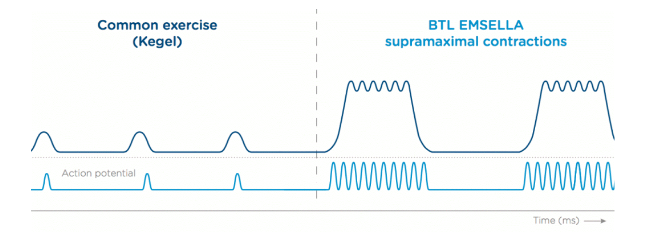4 Questions Answered about Female Incontinence
WOMENS WELLNESS
When it comes to incontinence, talking about accidental urinary leakage can often cause feelings of shame and embarrassment while impacting daily life. And while both men and women can be affected, women are more susceptible due to a broader range of factors.
Here we have broken down the four biggest questions your may have about what can cause incontinence, treatment options and why maintaining and regaining pelvic floor strength and control is critical for alleviating and helping incontinence.
What is incontinence?
Incontinence is used to describe the accidental or involuntary passing of urine. It is classified into three main types and can affect both men and women. All types are the same in that they result in urinary leakage caused by muscle weakness and a lack of being able to contract the pelvic floor muscles fully.
The three main types:
- Stress Urinary Incontinence is used to describe pelvic floor muscles which have ‘de-conditioned’, resulting in them no longer being able to offer full support to pelvic floor organs. This causes leakage when pressure is placed onto the bladder from laughing, sneezing, coughing or jumping.
- Urge Incontinence is a symptom over an overactive bladder, which causes the sudden and uncontrollable urge to pee, often resulting in leakage.
- Mixed Urinary Incontinence is used to describe a mixture of the above.
How do you fix incontinence?
One the biggest factors for improvement is working to strengthen the overall pelvic floor muscles which in turn helps to strengthen the bladder. Certain behavioural and lifestyles changes such as quitting smoking, weight loss, pelvic floor exercises (Kegels) and bladder training (urgency suppression), can also help the severity and relieve symptoms of incontinence.
Why is my bladder so weak?
Depending on the type of incontinence you have there are different potential causes for a ‘weak’ bladder. Those with Stress Urinary Incontinence can be due to childbirth, weight fluctuations, ageing, menopause and exercise such as CrossFit, running, aerobics or weight training while Urge Incontinence is an neuromuscular dysfunction often triggered or due to an underlying health condition causing the sudden urge to pee.
How can you strengthen the pelvic floor?
Regularly doing Kegel exercises and bladder training can help to strengthen and retain pelvic floor strength. The effectiveness of these exercises can be seen in long term and regular practice but will also depend on the severity of pelvic floor and bladder weakness.
There are also stronger, faster treatment and relief options such as Emsella, which is a non-invasive, walk-in walk-out treatment with results often noticeable within the first session. Treatments such as Emsella also offer the ability to do stronger pelvic floor exercises than regular Kegels and the ability to do more with the equivalent of one 30-minute Emsella session comparing to 11,000 Kegels making it an effective and convenient treatment to target incontinence and strengthen pelvic floor muscles.

Emsella treatment for urinary incontinence is available at our clinic in Leeds.

“To think that I have had small leakages every time I cough for years, I’m so delighted, it’s so easy and no more leakages for me.” – Lucy B
If you would like to arrange a free consultation to find out more about Emsella treatment available at The Private Clinic in Leeds, call us at 0333 920 2471 or Click Here.




